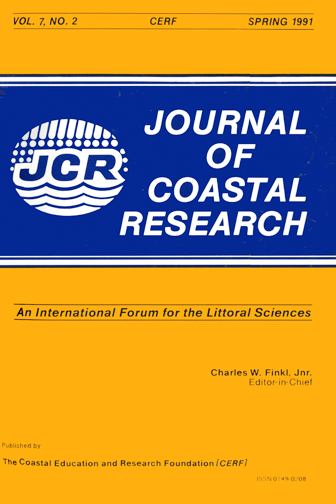Use of Natural and Artificial Accretion on the North Coast of Spain: Historical Trends and Assessment of Some Environmental and Economic Consequences
Keywords:
Land reclamation, sea-level rise hazards, biological productivity, primary productivity, coastal evolution, and environmental assessment.Abstract
The evolution of estuarine and coastal wetland zones along the sector between the Deva and Bidasoa rivers, after the Flandrian maximun, is analyzed using air photographs, old maps and charts, and field observations. The aims of this study were to quantify historical development of the land reclamation process in the area and to assess some of its environmental and economic consequences. The total area emerged during the post-Flandrian retreat was approximately, 24 km2. The new land areas formed afterwards cover some 73 km 2. Out of these, around 64 km2 are estimated to be due to direct human intervention (draining, filling and reclamation). This artificial area represents 40% of the estuarine and wetland zones. Assuming an uniform rate of accretion (an obvious simplification) it appears that new land spaces were formed, through natural processes, at a rate of about 0.22 km2/century after the Flandrian retreat. The approximate distribution of land-use types in the artificially created lands is: 36% agriculture, 22% industry, 14% residential, 13% others and 15% without use. A comparative assessment of the biological productivity, in terms of the monetary value of products obtained by the primary sector shows that the substitution of intertidal or wetland areas by agricultural lands represents, at present, a loss of about $US 250,000 km-2 year-1. This substitution affects 58% of the reclaimed lands. An estimate of the "willingness to pay" by the population, in order to preserve the aesthetic qualities and recreational potential of these areas indicates that the population of the region value this resource around $US 200 x 106 per year. The filled areas are, on the whole, less than 1 m above sea level. Therefore, a sea level rise of about 1 m, as predicted by several models for the next centuries, would endanger 73 km 2 of post-Flandrian natural and artificial lands. The capital value of buildings, structures, etc. on this land has been estimated around $US 5,000 x 106.


